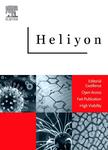版权所有:内蒙古大学图书馆 技术提供:维普资讯• 智图
内蒙古自治区呼和浩特市赛罕区大学西街235号 邮编: 010021

作者机构:Dilla University College of Agriculture and Natural Resource Department of Natural Resource Management Dilla Ethiopia Adama Science and Technology University College of Natural and Computational Science Department of Applied Geology Adama Ethiopia Addis Ababa University Institute of Water Resource Addis Ababa Ethiopia
出 版 物:《Heliyon》 (Heliyon)
年 卷 期:2025年第11卷第2期
页 面:e41658页
基 金:Dilla University, DU Ministry of Water and Energy of Ethiopia
主 题:Afroalpine Afromontane Historical ecology Upstream-downstream Wetland
摘 要:Understanding the relationship between land use and land cover (LULC) change and wetland-based ecosystem services (WESs) is crucial for sustaining wetlands and maintaining hydrological connectivity in the Genale-Dawa River Basin (GDRB). While the quantification of LULC change has received considerable emphasis, WESs are often overlooked in this region. This research aims to analyze LULC change and estimate the potential ecosystem services (ESs) provided by the GDRB. Data were collected through field observations, focus group discussions, and key informant interviews, with respondents selected using simple random and purposive sampling techniques. Landsat images between 2005 and 2020, along with documents review, were utilized to generate datasets. A stakeholders’ consultation forum and expert judgment were employed to understand the historical ecology of WESs in the GDRB. Results showed that: (1) LULC change occurred non-linearly in the GDRB, with agricultural land continuously increasing while forestland, woodland, and grassland decreased between 2005 and 2020;(2) the estimated ecosystem service value (ESV) of the GDRB was approximately US $10,360.28 million in 2005 and US $9033.06 million per year in 2020, indicating a decline of 12.81 %, resulting in a total net loss of US $1327.22 million from the basin. Although provisioning ESV has increased, regulating, supporting, and cultural ESVs have experienced significant losses. The increase in provisioning ESV does not compensate for the overall decline in ESVs in the GDRB. Soil compaction in the upstream part of the GDRB has diminished recharge potential and enhanced flooding downstream, jeopardizing sustainable hydrological connectivity in the basin. This situation has placed the basin at risk and at a critical crossroads. Notably, the upstream landscape is now more exposed to anthropogenic pressures than in the past, with clear impacts observed both locally and downstream. Therefore, robust law enforcement and awar